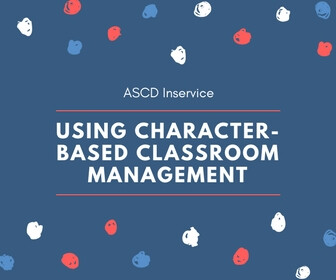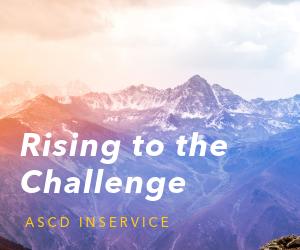Open today’s newspaper or turn on the news, and there is a good chance you’ll find a teenager –or more likely several teenagers– expressing their views or crafting action plans in support of a significant social cause. Teen activism is on the rise and is gaining widespread attention from parents, school administrators, policymakers, and the media.
As educators, there is much we can do to help students meaningfully pursue a passion for social change. Though students’ beliefs are wide-ranging, the expertise they need to succeed remains the same. As educators, we can support their development of the skills and knowledge they need to effectively make their case. We can empower them with the ability to deeply analyze historical efforts toward social change. We can equip them with tools to articulate and transfer that knowledge in their own times. The English Language Arts classroom is an ideal place to do that.
As students look inward and consider what it means to stand up for what they believe in, what impact a person can have, and what motivates people to create social change, ELA teachers can engage students with examples from history and can build a classroom culture that empowers students to be great change agents themselves.
Books can serve as the starting point for action. When working with colleagues recently to write a new ELA curriculum rooted in building knowledge about important topics and literacy skills through the study of complex texts, we featured readings about important heroes. For example, we read texts about and by Dr. Martin Luther King Jr. and Rosa Parks to gain insight into their lives and deepen students’ knowledge of the American Civil Rights Movement. But we didn’t stop there. We also created units highlighting books about lesser-known social justice champions who took critical stands when they were teenagers.
These include the book “Claudette Colvin: Twice Toward Justice,” by Phillip Hoose. It describes the events surrounding the 1955 arrest of 15-year-old Claudette Colvin who refused to give up her bus seat in Montgomery, Alabama nine months before Rosa Parks famously took that stand. To build knowledge of the ways heroism is forged in, and then transcends, hostile environments, students read “I am Malala,” the story of Malala Yousafzai’s steadfast fight for the rights of girls in her native Pakistan and globally even after being attacked by Taliban gunmen.
In reading texts like these, students examine the challenging circumstances, both individual and social, that led these teens to take their brave stands. By studying another young person’s impact, students learn how teenagers like Claudette and Malala created change and the process through which social change has occurred. As teachers, we can then ask students to consider how the actions of these real-life protagonists might be relevant today and relate to events happening in our own communities. We can also ask them to study social movements of the past to analyze what made them effective, be it sit-ins, other public demonstrations, or the use of media, and how those strategies relate to movements of today.
When students use complex texts, class discussion, and assignments to deepen their understanding of how change occurs, they become better equipped to cultivate their own roles in civic engagement. This creates the perfect opportunity for independent research: teachers can ask students to research the impact of a teen change agent whom they admire and who is advancing a cause the students care about. This assignment prompts students to drive their own learning and grasp the myriad ways young people can effect change. Students determine reliable sources of evidence and then communicate what they learn through writing and multimedia presentations. When students express their learning in this manner, they build critical writing and public speaking skills. When they share their learning in a presentation to peers or the broader community, they are pressed to consider the importance of audience and the impact of different delivery formats. To be effective change agents, students need to know how to reason, argue their position, and write and speak in a thoughtful and compelling way. But that’s only half of the equation. They also have to know how to listen to others.
Again, the ELA classroom is the perfect place to build speaking and listening skills. The Socratic Seminar, in which students engage in a collaborative dialogue with open-ended questions about a text or set of texts, is a high-impact routine for developing these skills. I often recommend teachers provide sentence frames to encourage all students’ participation and foster active listening. As students adopt them, they grasp how specific language practices prompt individuals to talk with each other instead of past each other. So, for example, one sentence frame might be something like, “I really like ___’s idea about how to ___.” Or, “I agree. In addition, we have to think about how to ___.” To disagree, a frame might look like, “I see what ____ means, but I think ____.”
Sentence frames, a deceivingly simple tool, enable students to access–and become full participants in–academic and civic discourse. One of my favorite resources for strategically employing sentence frames is the book “They Say/I Say: The Moves that Matter in Academic Writing” by Gerald Graff and Cathy Birkenstein.
Teaching students how to engage in this kind of civil dialogue and to actively listen to others’ viewpoints will build students’ knowledge of issues in history and of our time, help them consider various arguments, communicate their positions in a wider context and, ultimately, strengthen their own ability to bring about change.
Social change is rarely a linear, straightforward process. Guiding students to develop transferable skills and knowledge of change-making moments in history will do so much to set them steadily and intentionally on a path, winding as it may be, to creating change.








